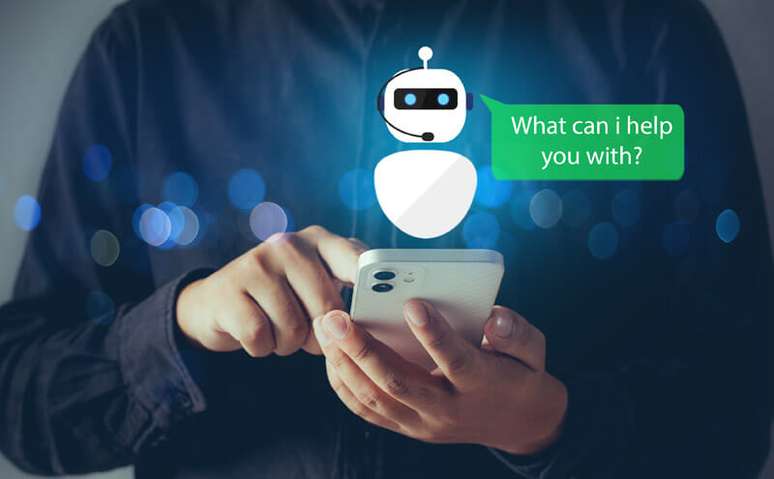The expert explains that Artificial Intelligence can be an ally of the teacher in the classroom and not vice versa
Can a chat robot that reproduces information in text make people’s lives easier? And will teaching be affected? These and other questions about ChatGPT have become part of discussions in various industries. With that, some myths have already emerged around the novelty, which already has more than 100 million active users since its launch at the end of November, according to a survey by Similarweb, a website and application analysis tool.
For Jan Krutzinna, CEO and founder of ChatClass, an edtech that offers AI technology for training, teaching English and chabot conversation experiences, AI is a gain for society, especially in education and has come to add even more to the education process.
“AI can expand teacher knowledge, support lesson preparation, and help students practice. It expands the possibilities for everyone,” explains the CEO.
To demystify once and for all the application of ChatGPT and its impact on teaching, the executive has listed 6 myths and truths on the subject.
1. ChatGPT can gradually replace the teacher
Myth. There are characteristics of teachers that cannot (yet) be replaced by machines, such as motivation and empathy. However, ChatGPT can be a useful tool to help students better understand content by providing interactive feedback and personalized explanations.
“It can also provide additional resources such as links to study materials, tutorials and other relevant information. And it can also be useful to replace the teacher in bureaucratic and repetitive tasks such as taking attendance, correcting exercises or planning lessons”, says the expert.
2. Teaching can be fully automated
Myth. AI is a powerful technology, but teaching should never be fully automated.
“It is important that teachers and educators stay involved and act as facilitators of learning. AI can, however, be used to help personalize teaching, deliver content, and create innovative approaches to enhance learning. It can also automate routine paperwork. This makes this sector a great potential for development through artificial intelligence,” Krutzinna defends.
3. ChatGPT is bad for education
Myth. Some may think that the fact that ChatGPT provides such complete and direct answers could facilitate plagiarism and hinder student learning.
“It is true that we should think about this, especially about how to evaluate students since we have a tool like this at our disposal. Nobody destroyed the calculator because it was invented, a way was found to test the knowledge of the students considering that there is such a good tool for doing mathematics. ChatGPT can help students learn and improve their critical thinking skills.”
4. AI offers features that make teaching easier
REAL. AI can help in many areas: in automated feedback, helping the teacher who doesn’t have enough time to give effective feedback on each student’s learning development; in one-on-one tutoring, helping students understand the concepts they have the most difficulty with; and in the creation of teaching plans and teaching materials in the form of pills of dynamic and effective content via social networks.
“You can also use AI to transcribe lectures that are only available in audio, to summarize large texts and books into a few topics. Its possibilities are endless and I’m very excited about it. Today, millions of people take courses via WhatsApp, with fast AI feedback and endless content. The revolution has already begun.”
5. ChatGPT encourages more natural language from chatbots
REAL. ChatGPT uses deep learning-based language models to generate more accurate and relevant responses, which helps improve the conversation experience for chatbots.
“ChatGPT also provides advanced features like artificial intelligence and machine learning to help enhance the natural language of the chatbot. With ChatGPT, expectation is a great advance in naturalization in the language of robots. There’s no turning back, we’re moving more and more towards creating robots that talk to people just like us, says Krutzinna.
6. ChatGPT is not a threat to the educational chatbot market
REAL. ChatGPT is a big step forward in the development of artificial intelligence as it has released to the world a very advanced conversational bot, both in terms of language and information filtering.
“With the release of its API, it allows to create an AI ecosystem from its technology. Rather than compete with other educational chatbots, ChatGPT complements them by providing educators with tools to build more advanced chatbots.
And the launches of new AGIs (general artificial intelligences) are already expected in the world and this is really promising, not only for education but for all sectors of society.
HOMEWORK inspires transformation in the world of work, in business, in society. It is creation ofCOMPASS
content and connection agency.
Source: Terra
Rose James is a Gossipify movie and series reviewer known for her in-depth analysis and unique perspective on the latest releases. With a background in film studies, she provides engaging and informative reviews, and keeps readers up to date with industry trends and emerging talents.







